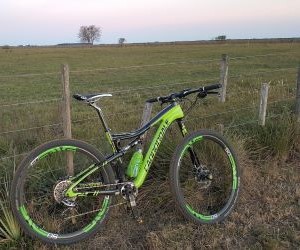Discover the most important cycling safety accessories every rider should have, from helmets to visibility gear, for safer and more confident rides.
HOW DO I AVOID MUSCLE FATIGUE IN CYCLING?
Tired legs can derail any ride, whether you're racing or just riding for fitness. This guide breaks down how to avoid muscle fatigue in cycling with data-backed strategies including proper fueling, recovery habits, smart pacing, and strength training. Ride longer, feel fresher, and finish stronger.

Understand what causes fatigue
Physiological roots of cycling fatigue
Cycling fatigue isn’t just tired legs—it’s a complex mix of muscular, neurological, and metabolic strain. The primary culprit is the accumulation of metabolic byproducts like hydrogen ions and lactate, which interfere with muscle contraction. Over time, glycogen depletion and electrolyte imbalance compound the problem, especially during long rides or intense intervals.
Another major cause is neuromuscular fatigue—when your nervous system struggles to activate your muscles efficiently. This typically sets in after high-rep efforts like climbing or sprinting. The result? Decreased coordination, strength, and endurance in the muscles you're relying on most.
Muscle groups most affected
Cyclists primarily fatigue the quadriceps, hamstrings, glutes, and calves. Imbalances between these muscles or poor pedaling technique can accelerate fatigue. For instance, over-reliance on quads and underuse of glutes leads to quicker burnout on climbs.
Lactate buildup during anaerobic efforts
Glycogen depletion after 90+ minutes
Neuromuscular fatigue on long climbs
Overtraining without recovery balance
Poor saddle fit causing compensatory muscle strain
Understanding the science behind fatigue helps you recognize warning signs early and adjust your strategy mid-ride to preserve performance.
Training and pacing strategies
Build fatigue resistance through training
One of the most effective ways to prevent fatigue is to train your body to resist it. Structured endurance training—particularly low-intensity Zone 2 rides—improves mitochondrial density and increases fat oxidation, meaning your muscles rely less on glycogen and more on sustainable energy pathways.
Include long steady-state rides of 2–4 hours to condition muscle endurance. Supplement with high-intensity intervals (HIIT) once or twice a week to build power and tolerance to lactate. Strength training off the bike, especially focusing on posterior chain muscles, improves muscular balance and power transfer efficiency.
Smart pacing to avoid burnout
Starting too hard is a recipe for early fatigue. Maintain a consistent power output within your aerobic threshold—typically 65–75% of FTP. On climbs or into headwinds, avoid surging unless strategically necessary. Keep cadence between 85–95 rpm to reduce muscle strain.
Train 80% in Zone 2, 20% in high-intensity
Use FTP and HR data to guide pacing
Incorporate tempo rides to build muscular endurance
Vary cadence to engage different muscle groups
Periodize your training to allow for rest blocks
Smart training and disciplined pacing help you conserve energy for the back half of any ride—where fatigue usually strikes hardest.
Fueling, hydration, and recovery habits
Fueling before, during, and after
Nutrition is the secret weapon in fighting fatigue. Start with a high-carb meal 2–3 hours before your ride to top off glycogen stores. During the ride, consume 30–90g of carbs per hour depending on intensity and duration. Blending glucose and fructose sources improves absorption and helps delay fatigue.
Post-ride recovery should include 3:1 carb-to-protein within 30 minutes to jumpstart glycogen replenishment and muscle repair. Dehydration is another silent fatigue amplifier—lose more than 2% body weight in sweat and performance drops rapidly.
Active recovery and sleep optimization
Your body adapts during rest, not during work. Integrate active recovery rides at Zone 1–2 and prioritize sleep—aim for 7–9 hours per night. Use compression gear or massage to support circulation and reduce DOMS (delayed onset muscle soreness).
Consume electrolytes and 500–750ml fluid/hour
Use caffeine strategically—not early in the ride
Stretch and foam roll post-ride to release tension
Sleep in a cool, dark room to enhance recovery
Track HRV to monitor overtraining risk
You can’t out-train poor recovery. A well-fueled and well-rested rider resists fatigue far longer than one relying on grit alone.
YOU MAY ALSO BE INTERESTED






